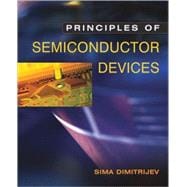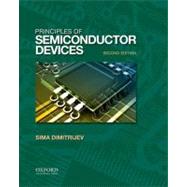Principles Of Semiconductor Devices

Principles Of Semiconductor Devices
- ISBN 13:
9780195161137
- ISBN 10:
0195161130
- Edition: 2nd
- Format: Hardcover
- Copyright: 10/27/2005
- Publisher: Oxford University Press
- Newer Edition
Rent
Sorry, this item is currently unavailable.
Note: Supplemental materials are not guaranteed with Rental or Used book purchases.
Extend or Purchase Your Rental at Any Time
Need to keep your rental past your due date? At any time before your due date you can extend or purchase your rental through your account.
Summary
Quantum mechanical phenomena-including energy bands, energy gaps, holes, and effective mass-constitute the majority of properties unique to semiconductor materials. Understanding how these properties affect the electrical characteristics of semiconductors is vital for engineers working withtoday's nanoscale devices.Designed for upper-level undergraduate and graduate courses, Principles of Semiconductor Devices covers the dominant practical applications of semiconductor device theory and applies quantum mechanical concepts and equations to develop the energy-band model. The text presents quantum mechanicsthrough examples related to the energy-band model, providing students with a deeper understanding of the energy-band diagrams used to explain semiconductor device operation. The semiconductor theory is directly linked to the electronic layout and design of integrated circuits.The author has divided the text into four parts. Part I explains semiconductor physics, and Part II presents the principles of operation and modeling of the fundamental junctions and transistors. Part III discusses the diode, MOSFET, and BJT topics that are needed for circuit design. Part IVintroduces photonic devices, microwave FETs, negative-resistance diodes, and power devices. The chapters and the sections in each chapter are organized hierarchically. Core material is presented first, followed by advanced topics, allowing instructors to select more rigorous, design-related topicsas they see fit.







